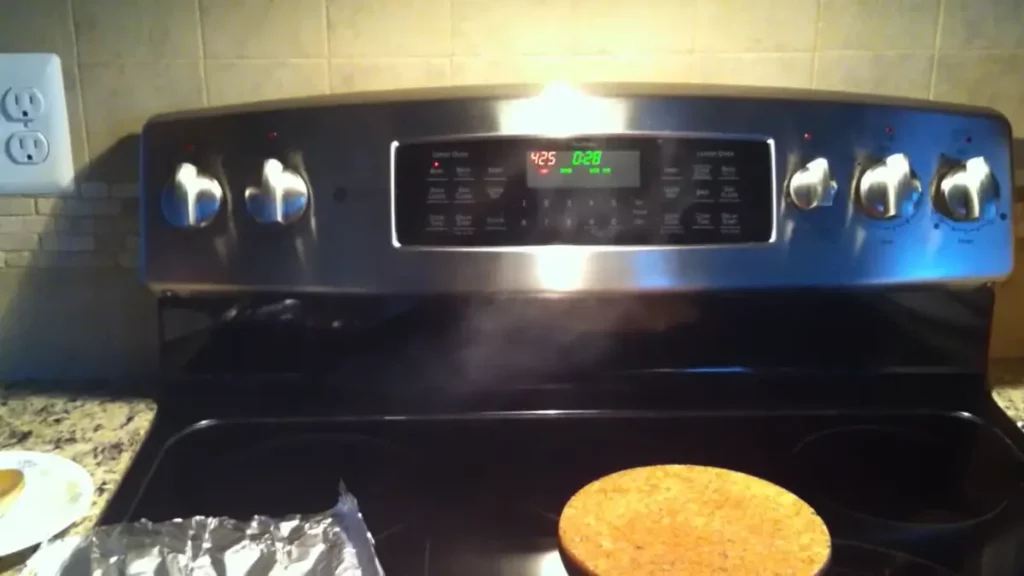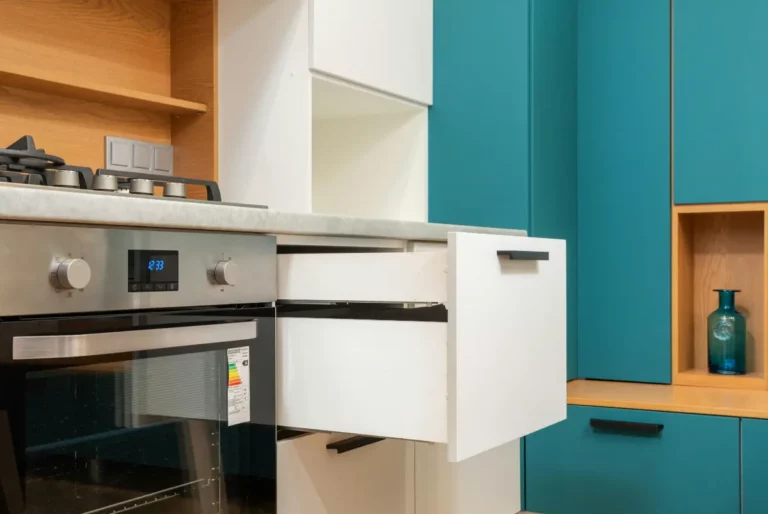Every oven has a different type of control panel. However, if you are experiencing problems, including the control panel on your oven not functioning, there may be an issue, such as the panel overheating.
You will need to fix it if smoke is visible exiting the control panel as well. Even while a smokey oven can be unsettling, professional help isn’t always necessary.
By comprehending the typical reasons and putting suitable fixes in place, you may successfully deal with the problem and get your oven operating safely again.
Key Takeaway

The Reason Behind the Smoke Coming Out of the Oven Control
To clear the smoke and stop smoking permanently, we’ve listed the typical causes of a smoking oven.
1. New Oven
Because of the manufacturing process, smoke and scents are usual during the first few uses of an oven. The manufacturing coating can be burned off by the oven. After a few usages, this will go away. Find out more about the fragrance that comes from a newly purchased oven.
Performing an empty cycle is the most effective technique to eliminate the odor. Before this cycle, avoid cooking any food since the taste and/or smell may cling to it.
If you want your oven to burn, do the following:
- After turning off the oven, allow it to cool fully.
- Pots and pans should be taken off of the oven racks.
- When the manufacturer recommends a temperature of 400 to 600 degrees Fahrenheit, close the oven door and select the “bake” setting.
- Use the oven for half an hour or more.
- When the oven is burning, open a window to let some fresh air into the kitchen.
- Avoid opening the oven door until it has cooled fully if there is an excessive amount of smoke.
- Make contact with the oven supplier for assistance if the smoke continues after the burn-in cycle.
There should be no more smoke after the burn-in cycle is finished. After that, you can continue cooking in your oven as usual.
2. Extra Cleaning Supplies
Remaining cleaning products are frequently the source of another kind of residue of chemicals that might make your oven smoke and worry you. Using chemical cleaning products, like foamy sprays, to clean your oven will undoubtedly leave residue behind.
When the oven is on, this residue will burn and produce smoke that is not only unpleasant to breathe in but also contains chemicals you probably don’t want to be inhaling too much of.
Make sure you’ve cleaned your oven from top to bottom, including the door, sides, and bottom, if it’s still smoking after using vinegar and water. This will aid in getting rid of any residue that might be the source of the smoke. Completely dry the oven after cleaning.
Use a moist cloth to thoroughly clean the oven after using cleaning chemicals to prevent this issue in the future. This will assist in getting rid of any residue that can produce smoke.
To avoid any problems, make sure you adhere to the cleaning instructions found in your owner’s manual.
3. Damaged Heating Component
Smoke in your oven may also be the result of a malfunctioning or nearly broken heating element. A significant buildup of extra heat can short-circuit your oven and cause smoke, whether it comes from the grill or the main electric heating element.
To check if this is the case, switch your oven back on after turning it off, then wait 15 to 20 minutes to observe if the main or grill heating element lights red.
When it doesn’t and you’ve determined that the oven’s heating element is defective, it’s time to schedule an oven repair or make an order for a replacement part to be installed.
4. Remaining Food
Smoke is typically produced in used ovens as a byproduct of food remnants burning.
If you frequently bake or broil high-fat dishes like steaks or pizzas immediately on the oven racks without using a baking sheet underneath, food fragments or debris may fall to the floor and grease may spray on the oven’s sidewalls and top.
If you do not clear these leftovers while they are still wet, they may solidify, burn, release smoke, and in extreme circumstances, catch fire when you use the oven again. Turn off the oven and allow it to cool completely to put an end to the smoking.
Next, open the oven door, use plastic tongs to pick up any larger food chunks from the floor, and carefully clean the oven by using natural cleaning solutions like baking soda, white vinegar, and water to get rid of food splatters, oil, and debris from the floor, roof, and sidewalls.
5. Increased Gas Pressure
One possibility to consider if the gas oven produces smoke and you’re not sure why is that your home’s gas pressure may be too high.
When a gas oven reaches its highest temperatures, high pressure from the gas can overfeed the flame, causing it to expand and release smoke.
For assistance regarding smoking caused by high gas pressure, you can speak with your gas provider or consult the manufacturer of your oven.
6. Defective Wiring
Another possibility that could be the source of your problem is a defect in the wiring, which could ignite the wires or another problem with the cables overheating. Therefore, you must have them fixed correctly if you notice any indications of a short circuit, improperly connected terminals, or damaged wires.
You will need to make sure that those wires are correctly changed with some of the stronger wires if they are overheating and their protective coating melting leading you to experience such issues and problems. This will usually fix the problem for you.
If you’ve exhausted all troubleshooting options and the smoking persists, your oven’s control panel likely requires replacement. Replacing the control panel will eliminate smoking and any related issues.
How Will You Effectively Use and Maintain an Oven?
Here is how you can use and maintain your oven effectively
- Don’t put food directly on the oven racks; instead, put it in baking or broiling pans before cooking to prevent spills.
- Place a fireproof, non-stick oven mat on the bottom rack of your oven if it has many tiers to collect drips and debris from food placed on the upper rack.
- Food put too near the heat source in an electric oven will easily smoke or catch fire, so keep a minimum of 3 inches from food and the heating elements. Maintain the same space between the food and the grill (if it’s present) and the main burner (located at the bottom of the oven) with gas ovens.
- Use a rag dampened with water to clean any sticky food residue or fluids from the inside of the door glass, exterior walls, floor, and roof after using the oven.
- Every month, give your oven’s inside and racks a thorough cleaning.
- Limit how many times a year you use the self-clean option to five.
Frequently Asked Questions [FAQs]
How do I get the smoke out of my hot oven?
Use enough baking soda, also known as bicarbonate of soda, to enclose and absorb the spill.
Is it okay to use my oven even when there is smoke near the control panel?
No, it’s not secure. Cut off the oven’s power supply, switch it off right away, and get help from a professional if you see smoke emerging from the control panel.
How frequently should I wash the control panel to avoid problems with smoke?
Little Use: Every 3-4 months
Moderate Use: Every 1-2 months
High Usage: 2-3 weeks
If the control panel is the cause of the problem, can I change it myself?
Handling electrical components is necessary while replacing an oven’s control panel. It is advised that a skilled professional complete this task to guarantee safety and good installation.






